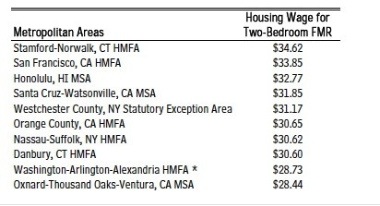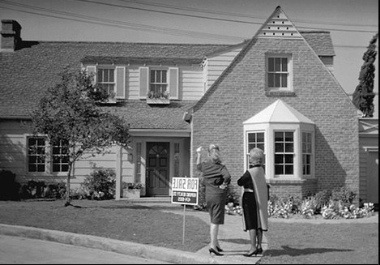Now that the housing bubble (or whatever it was) has gone pear-shaped, we tend to see the whole episode discussed in highly clinical, economic terms. For those of us who had been trying to cope with the costs of housing during that time period, it was hardly clinical, and the people holding short sticks now were hardly then the sad little victims of the big bad banks then that they are generally portrayed to be now. Yes, I do think some people are victims, but the truth is, for every victim, I encountered back then swaggering realtors, mortgage lenders, and home owners who believed they were the smartest people in the world for being the market while was the dumbest and most pathetic person in the world for not being in the market.
Meghan Daum’s new book is called Life Would Be Perfect If I Lived In That House, and I have to admit I stayed up all night last Monday reading it. She’s an absolutely marvelous prose stylist, wonderfully funny, and remarkably insightful about how the external trappings of the house and decorating became, for Americans during our second Jazz Age, a way to demonstrate to others and ourselves our personal character and distinctiveness. Bourdieu, my favorite social theorist, will probably get to use this episode as a nice double entendre wordplay for his concept of habitus.
The brilliant writing of this next passage from Daum’s does more to capture the reality than all the sanitized economic writing about the “Bubble that wasn’t a bubble” I’ve consumed in months:
It was, by now, 2004. We were not at the apogee of the market, but we were getting there. The way I’ve always imagined it is this: if the real estate bubble were a distended piece of chewing gum in the mouth of a teenage girl, it would have been about the size of a lemon at that point–formidable but not yet out of control. By early 2005 the bubble would have covered her nose and eyes, and by the end of that year, it would been as big as her head. By 2007 it would have deflated slightly, and by 2008 it would have popped and been all over her face. By 2009 she’d have choked and died on the gum, but let’s not go there now.
She continues:
Instead, let’s remember 2004. Money was everywhere: talk of it, displays of it, envy of those who had it, and pity for those who didn’t. In the spring of 2004, you could find a thirty-year fixed interest rate of 5 percent. Adjustable-rate loans were, of course, practically falling off trucks–not just shiny, new expensive trucks but old, beat-up trucks, garbage trucks, even. People were paying $600,000 or $700,000 for properties that, four years earlier, would have been worth $200,000. people were taking out low-interest loans for $700,000, buying houses for $550,000, and using the difference to buy Range Rovers and vacations in Anguilla.
I remember thinking about this when I came back to Los Angeles from Virginia and I was staying with dear friends. I had made an above-average steak dinner, and we sat around that night and talked of three things: food, as these friends are foodies, the shootings Virginia Tech which still exert a profound effect on me, and real estate. And real estate and more real estate. I wondered then if I hadn’t simply been overloaded with real estate talk because I was looking for housing, but I don’t think so. It was everywhere, in the air, like the heady-sick sweet smell of jasmine past its prime.



